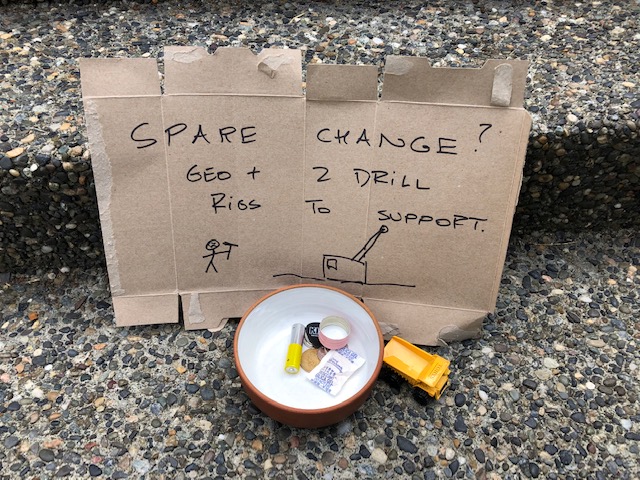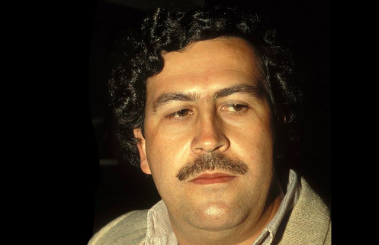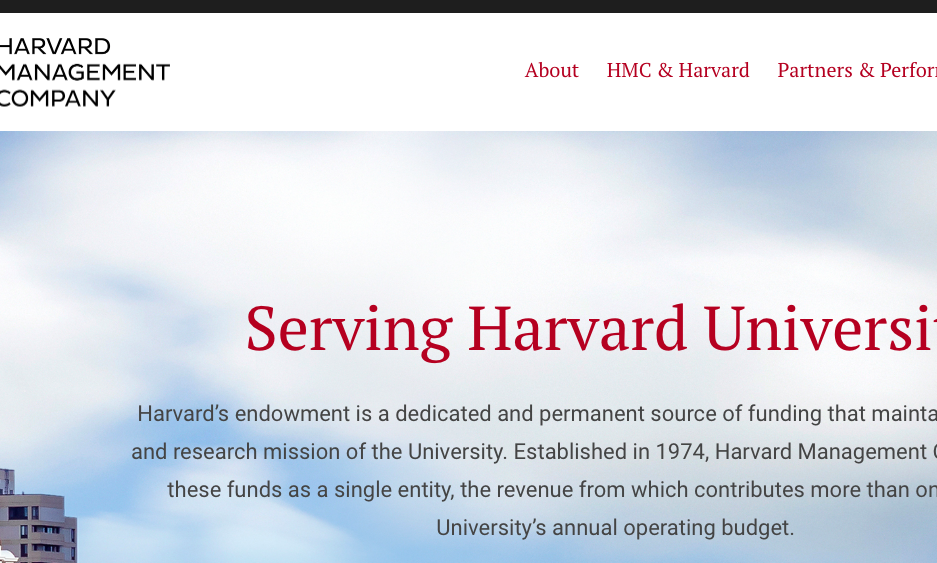I Love Pain.
This week I’m diving head-first into the murk, to take an unpleasant look at the slimy underbelly of the junior mining world. Yes, I’m talking about an ugly hidden world of prostitution, ritual humiliation, sadomasochism and betrayal, also known as junior mining finance.
For the last few years, trying to finance a junior ExploreCo has been a thankless task. Bumming for change outside Starbucks would’ve been more fun; at least that’s spiced up by the odd half-finished Americano and discarded smokes. No such luck in the finance world.

Faced with a world of apathetic investors who couldn’t give a tinker’s cuss about junior miners, how do you finance your resource company? How do you pay the lifestyle salaries, the bills, and keep the lights on through the down times without the pain of actually exploring for anything? Like an old C90 cassette on repeat, we blather on about hoping to raise $500k here, $250k there, while the world spins, uncaring and increasingly oblivious to our fiscal pain.

I’ve compiled a few simplistic but helpful comments and ideas, gleaned from my 15-odd years of helping to raise money for Vancouver juniors. To be sure, it’s not a comprehensive list; it’s impossible to cover every type of financing, but it’s a start. At the suggestion of a trusted colleague, I’m splitting the post into 2 pieces. Part 1 covers equity-related financings and Part 2 –coming soon- covers anything else I can think of such as debt, royalties, drug smuggling and so on.
All opinions and sarcasm are strictly my own. No promoters were hurt in the production of this article.
1. The Initial Public Offering
Welcome to the party. Come on in and crack open a beer.
You’ve found a project and a management team. Your QP has written a passable 43-101 report recommending a $100k program. You persuaded an unsuspecting brokerage house to help you list, filed your listing documents, and raised $5m from their investors to fund your dream.
Now you can move in to a slightly mouldy office on West Pender across the alley from a 5th floor classroom full of Brazilian ESL students, with that pale institutional brown paint on the walls and seagull shit on the window ledges. You papered yourself up in the early seed rounds and the future looks bright! Congratulations and welcome to Reality Hill. It’s all down from here.

2. Don’t Finance. Let The Company Starve,
Let’s get straight to the point. You’ve spent the IPO cash on an ill-advised drill program in the wilds of Patagonia, facing costly anti-gringo community opposition every step of the way.
Now ask yourself, is your company worth saving? Wouldn’t it be better to let the company grind to a halt when the bank account runs dry? Do the honourable thing and don’t ask your long-suffering investors for more money. You’ll be doing everyone a favour. As the IKN blog wisely puts it, don’t feed the animals.
3. The Private Placement (Brokered/Non-Brokered)
OK, so euthanasia isn’t an option. Fuck it, move on. What’s next?
You need cash, and the great unwashed (aka retail investors) are showing moderately apathetic levels of sub-enthusiastic so-so keenness. Time to run a private placement (PP); the plain-vanilla missionary position of cash raises from page 2 of the Kama Sutra of Mining Finance. It’s not nearly kinky enough for me, but we have to try, right? How else do you improve technique?
Put out a news release announcing a $2m PP at 15c with a 3-year, full warrant at 16c as an incentive for investors to open up their grass-infused pocket books. The promised 7+7 finder’s fee should attract the odd broker from Kelowna or Calgary, the ones with a fat book of well-heeled but gullible old Prairie boys, assuming they haven’t died of boredom watching the sector.
Remember to summarise the company’s projects in glowing terms in the financing release. In 2 months, when the PP is only 25% filled and you announce the inevitable extension and price reduction, you can summarise the projects again to even less interest. Your personal challenge through the whole process is to close on half of the PP within 5 months with less than 50 one-on-one meetings. Ha ha ha ha ha.. stop that.

4. Call Mum and Dad, Eh?
If you can’t bear to see the company wound up, the PP is a bust, and you’re convinced there’s still merit in drilling more duster holes, take the official Mum and Dad test and call them next. They know you’re the best, the smartest and you’re never wrong. They’ll mortgage the cottage, and cash in the RRSPs to keep your ExploreCo afloat for 6 more months. But if they say no, take it from me, you really are screwed.
Assuming they’re in, they’ll be able to talk their senile care home friends into stumping up some Benjamins during 4pm Bingo on Wednesday. Then, when you do finally go down, you’ll go down as one big family. Ahhh. Bless.
5. List Overseas
Mum and Dad have lost the farm and the Bingo takings were minimal. Shit creek beckons.
The solution is to find new, fertile financing pasture on a parochial exchange. One where the investors know nothing about resource companies -specifically YOUR company, particularly the dodgy director from the Middle East, who owns 15% of the company and may be connected to the President of Turkmenistan.
Try Uruguay perhaps. Or the Port Moresby Stock Exchange (Pomsox) in Papua New Guinea. Find a local sponsoring broker, run an IPO selling stock to the local pension funds, make sure to exploit the lax regulations on technical and insider disclosure, then never go back. Cash raised, Foreign Johnny shareholders left holding the bag. Job done. This is called “innovation in finance”.

6. Rights Offering
The Company’s in trouble, the share price stinks and it’s hasta la vista to the Uruguayan pension fund money. You correctly judge that this is the time for a Rights Offering, sometimes known as a Wrongs Offering.
You reach out to your shareholders and offer them the pro-rated right to buy more of your worthless paper. Typically a rights offering is at a discount to market price, but your share price is so low any discount would mean you give them money to take your paper.
7. Find A Billionaire
Three shareholders took up the Rights Offering and you raised $7,000. Time to find a Sugar Daddy. And who better than an overseas-based billionaire; one who’s hot and horny to find gold but has zero knowledge of how the industry actually works? You should be able to squeeze 3 or 4 decent rounds of finance out of them before they realize they’ve been milked and send round Odd Job to realign your chakras with his Death Hat.

8. Private Equity
The Billionaire has had his fun, and now you know why you’ve always avoided having a hot-coffee colonic. We’re getting down to last resort shit here; yes, it’s Private Equity time.
Remember, people who work for PE are always the smartest people in any room. Always. It’s a fact, and one they’re not shy about telling you. See, they raised their $500 million fund from half a dozen American university endowment funds who demand bigly-IQ smartness from their money managers. So DO NOT DOUBT their intelligently erudite cleverness.

Every PE company has the “dream team” of mining and it all sounds SO good. The CEO will be a multi-lingual ex-head of commodities from Super Giga Bank, with another 10 years working for the IMF. You’ll also meet the 20-something savant quant who can instantly tell you the EBITDA of your project, factoring in metallurgical recoveries, Forex fluctuations and 2 different cut off grades for underground and open pit.
But wait until they tell you what the 9-month due-diligence process will entail IF you want to get in to their sweaty, cash-filled pockets. And if your sorry company does perchance pass muster, any money you’re offered won’t come cheap unless they decide to buy via a private placement.

Throw in the added joy of having the dream team leaning over your shoulder 24/7, like the weird drunken uncle you knew as a kid and saw once a year at Christmas. You know, the toothless one who smelled and lived on the farm alone. With a goat.
So you have to ask the question; is PE worth it?
9. Warrant Exercise
Oh my God, something’s gone right and you’re half way down the Golden Path to the fabled Land of Mammon. Gold’s up, or perhaps your sampling program has finally yielded great assays.
Your stock price is rising faster than Donald Trump’s boner when Tucker Carlson gets out the strap-on. Your warrant holders start sending you fat cheques to exercise, and they’re selling some to cover the exercise cost creating trading liquidity. The investor calls are happy ones for the first time in 14 years. BUT HOLY SHIT WAIT THERE’S MORE! The final, happy consequence of the in-flow of cash is a full treasury and a cleaned-up share structure.
Phew! A heady mix of happy events. Life’s great. Then you wake up and realise it was all a wet dream and now you have to change the sheets.
9. Option Exercise
The warrant prick tease has come and gone, a momentary flash of excitement in your hard-scrabble life. But what’s this? The corporate secretary quietly lets slip that your underlings have been exercising their stock options; writing cheques to the company and “taking some cash off the table.”
You know what it means, right? Yes you do. Come on. Admit it.
You’re screwed.
With their options in the black, happy to see modest paper profits after a decade of market misery, the entire team is about to quit and bugger off to guzzle artisan Tequilas on the Playa in Cancun. You never get poor taking a profit.

But you’re the boss so its nut-the-hell-up time. Remember, these are paper profits. Hold off on signing the treasury orders for them until yours is done and you’ve sold your stock, soaking up what little liquidity your company has.
Then, in a final twist of the knife, delay filing your insider reports just long enough to avoid scrutiny over your insider sales. The inevitable $50 fine for late filing is worth every penny. You’ve made a profit, and the company has cash to pay you again. Management has its benefits.
10. A Bought Deal
Otherwise known as sticking it to the brokerage house. The broker gives the money directly to the resource company net of fees, and then takes on the risk of selling the securities on to their clients. Hopefully they first checked with their clients that there’s an appetite to buy your lithium/uranium/whocaresium ExploreCo shares.
The key to a successful bought deal is, if you’re offered one take it. Don’t stop to think about it. Trouser the cash fast. Then lie low for a while the gold price slides, and the broker ends up using their vast tranche of unsold, worthless shares to wrap up the fish and chips for the office party.
11. At The Market Offering (ATM)
Your corporate secretary shacks up with the transfer agent and works 24/7 printing up shiny new share certs so that the ATM-sponsoring broker can chuck them by the bucket load at the market. Assuming, that is, you have the trading liquidity to soak up the astonishing volume of freshly-minted 20c paper.
An ATM financing removes the need for those dreary road shows to investors; share sales are directly into the market and done, in theory, at unpredictable times so that your stock can’t be shorted by POd investors.
Huzzah! Those miserable, sweaty, hungover hours in the back of a black Lincoln Town Car stuck on 5th Avenue are done! Kiss goodbye to the 9am with Mr I-Don’t-Give-A-Fuck-About-Your-Company on the 54th floor of the Chrysler building. You won’t have to listen to your IR consultant braying into their phone, hastily rearranging the 10.30am while you pray for death as the breakfast coffee and fresh OJ work their laxative magic on you (and yes, that’s the voice of experience speaking.)

Those days are over! Sit back and let the cash trickle slowly in, the persistent share sales capping the stock price for the next 12 months.
12. Equity Tranche Death Spiral
All else has failed. You have stark choices to make. Live or die. You choose to live. There’s only one option left: the equity tranche death spiral.
Look away now if you’re faint of heart. It’s the Quinten Tarantino gore-fest of mining finance, an option too distressing to describe. It’s a financing model usually adopted only by the most desperate; teams that are willing to sell their poor lost souls to a hugely rapacious devil. It invariably leads to steaming piles of bloody entrails in the street. If you insist on learning more, here’s a link that describes how it works and here’s an actual example. Do not read in the company of children.
Kyrie eleison. Christe eleison.

Part 2 of this dull diatribe, where we take a greasy look at the other options to raise cash, will be coming soon. Thanks to Dr No for valuable input.
Don’t Forget
If this piece hasn’t put you off my blog for life or forced you into premature bankruptcy, you really should subscribe to urbancrows.com via the miserable subscription box that I carelessly placed near the top of the page. One day I’ll learn enough about Mail Chimp to make it look vaguely professional. I’m convinced that I’ll never reach 100 subscribers SO PLEASE PROVE ME WRONG. I’ll be sure to email you more slime about the junior miners from time to time, and I’ll even take requests for articles. Weddings, parties, anything. Capiche?


Very enjoyable
Keep up the good work.
Jon
Thanks Jon. Glad you enjoyed it. It was fun one to write but the subject matter gets broader and broader the more you delve into it.
Don’t forget the online world… there’s targeted online advertising (“buy our stock”), which is being practiced by more and more companies, intrusions of one kind or another onto Twitter, and also the sponsoring of video interviews of company CEO’s (who are all, surprisingly, “very excited”).